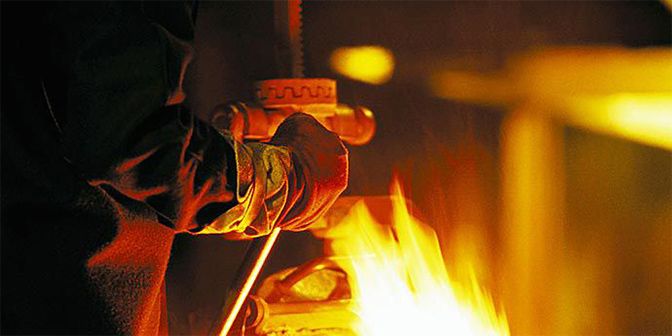Understanding the NFPA standards for flame-resistant garments
The National Fire Protection Association (NFPA) “develops and publishes more than 300 consensus codes and standards intended to eliminate death, injury, property and economic loss due to fire, electrical, and related hazards.”

Two of these standards, NFPA 2112 and NFPA 2113, are of special importance in guiding the design, manufacture and consumer selection of flame-resistant (FR) garments. The standards’ summary text, along with several frequently asked questions, are outlined below.
NFPA 2112: Standard on Flame-Resistant Garments for Protection of Industrial Personnel Against Flash Fire
Edition: 2012
Purpose: The NFPA 2112 standard shall provide minimum requirements for the design, construction, evaluation, and certification of flame-resistant garments for use by industrial personnel, with the intent of not contributing to the burn injury of the wearer, providing a degree of protection to the wearer, and reducing the severity of burn injuries resulting from short-duration thermal exposures or accidental exposure to flash fires.
Scope: The NFPA 2112 standard shall specify the minimum performance requirements and test methods for flame-resistant fabrics and components and the design and certification requirements for garments for use in areas at risk from flash fires.
Frequently Asked Questions:
What is NFPA 2112?
The NFPA 2112 Standard provides minimum requirements for the design, construction, evaluation, and certification of flame-resistant (FR) garments for use by industrial personnel. It does not provide guidance on matching the personal protective equipment (PPE) to the quantified hazard—that is the role of NFPA 2113.
Are all industrial fires three seconds or less?
Short-duration fires are rare. Just open the newspaper, turn on the TV or visit a website such as U.S. Chemical Safety Board to see how extensive fires usually are when they occur at manufacturing, chemical and petroleum-handling industrial sites. Three seconds is simply a performance specification used to qualify a garment as FR. It has very little to do with establishing the correct level of protection for workers in specific work environments.
What minimum percentage body burn is required to pass NFPA 2112 testing?
For a garment t ao pass NFPA 2112 testing, it must exhibit a 50% or less total predicted body burn using a standardized burn injury model.
Is a garment that permits a 50% predicted body burn acceptable to you?
If not, you need to look beyond NFPA 2112-compliant garments. Evaluate garment systems for their actual performance levels and not simply pass/fail criteria based on the 50% model. There are no shortcuts. Do the homework; generate the data; and work with garment providers to understand what type of garments will provide the levels of protection your workers require.
NFPA 2113: Standard on Selection, Care, Use, and Maintenance of Flame-Resistant Garments for Protection of Industrial Personnel Against Short-Duration Thermal Exposures
Edition: 2012
Purpose: The purpose of the NFPA 2113 standard shall be to reduce the health and safety risks associated with the incorrect selection and use of flame-resistant garments and those risks associated with incorrectly maintained, contaminated, or damaged flame-resistant garments.
Scope: The NFPA 2113 standard shall specify the minimum selection, care, use, and maintenance requirements for flame-resistant garments for use by industrial personnel in areas at risk from flash fires or short-duration flame exposure that are compliant with NFPA 2112, Standard on Flame-Resistant Garments for Protection of Industrial Personnel Against Flash Fire.
Frequently Asked Questions:
Under NFPA 2113, is a hazard assessment really necessary?
Under NFPA 2113, a hazard assessment must be conducted that will deliver a quantified energy level for the various tasks that workers perform. To conduct a proper hazard assessment, you must answer the following critical questions:
• What materials are burning? What is your fuel source?
• How mucha air is available to mix with the fuel to support combustion?
• How long will it take for a person to identify they are in trouble and do something about it?
• Are workers wearing gear that will slow them down?
Is the expected duration of a fire critical in selecting the proper thermal (PPE)?
Knowing the duration of a fire is usually important in understanding potential damage to infrastructure and fire escalation factors, as has occurred in large industrial incidents. However, when selecting PPE, the duration of the thermal exposure a person might experience during escape is the important factor. This is normally determined through a site and task hazard analysis. Several tools can assist in this process. The Center for Chemical Process Safety of the American Institute of Chemical Engineers (CCPS) and the NFPA 2113 standard have been recognized by OSHA as guides to assist with this process and selection of the appropriate thermal-protective PPE.
NFPA 2113 refers to “flash” fires. Are “flash” fires the only industrial fire hazard that can cause burn injury?
No. There are many other fire hazard risks in process industries that handle flammable materials. These fire hazards occur from unplanned equipment failures that release, with subsequent ignition, process gases, liquids and solids from spills or pressurized line breaks. Many of these fires begin when a flash or vapor cloud fire burns back to the source of the release. Overall, industrial fire hazards are generally classified as:
Vapor cloud fires, with:
a) no explosion,
b) resulting from explosion and
c) resulting in explosion
Fireballs (instantaneous release and ignition of liquefied gas above boiling point), jet flames (directed fire from flammable materials escaping under pressure), flammable liquid fires, forming one or both:
a) pool fires and
b) running liquid fires
Solids fires, in the form of:
a) dust fires or
b) fires of solid materials (i.e., pyrophoric metals), structural fires (i.e., fires of warehouse, office and support buildings) and fires associated with oxygen